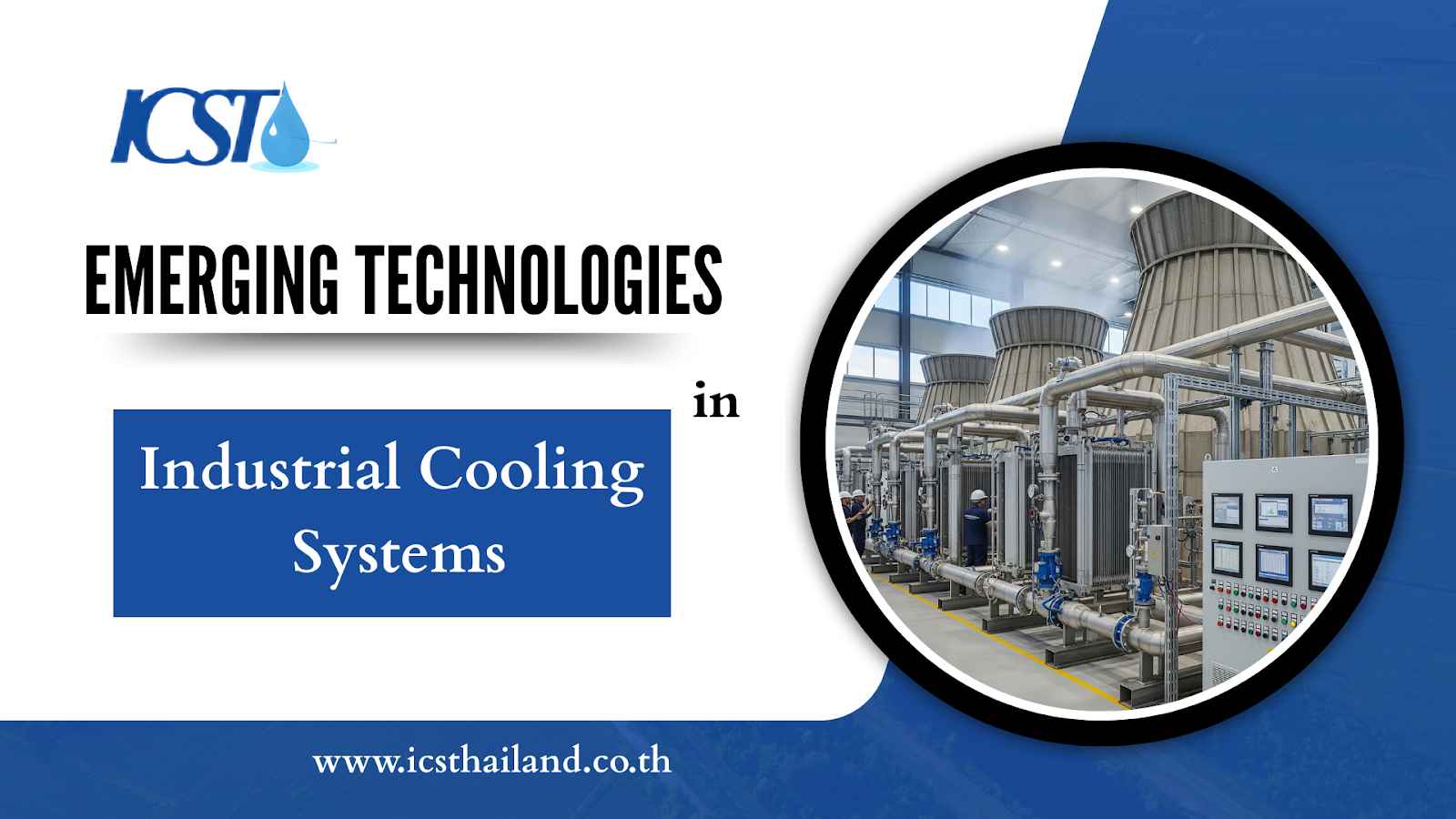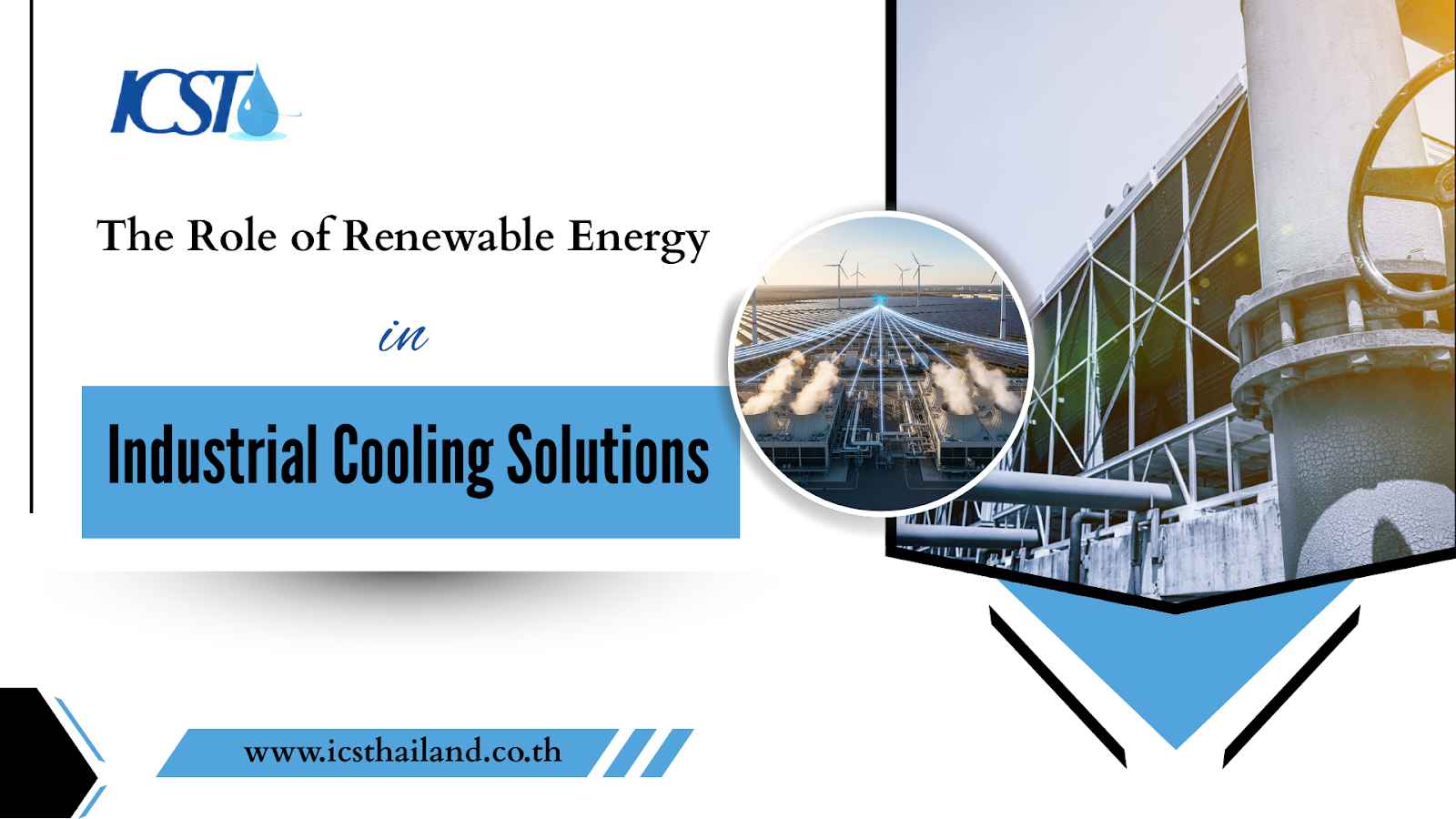Imagine stepping into your building only to be greeted by a hot, humid environment—even after investing a significant amount in an air cooler. Frustrating, right? Air coolers are crucial for keeping industrial spaces comfortable, especially in Thailand’s intense heat.
These systems rely on water to cool the air, providing an eco-friendly and budget-friendly solution compared to conventional air conditioning. But like any equipment, air coolers can face issues that affect their performance, leaving you sweating and searching for solutions.
To keep your air coolers running at peak performance, it’s essential to understand their operation, prioritize regular maintenance, and address issues proactively.
In this guide, we’ll dive into the most common air cooler challenges faced in industrial settings and provide expert strategies to troubleshoot and resolve them effectively, ensuring your operations stay smooth and efficient.
Table of Contents
ToggleThe Importance of Proactive Troubleshooting
The key is to address potential issues early. Why?
- Prevent costly downtime by catching minor problems before they escalate.
- Maintain productivity, especially during peak operational hours.
- Extend equipment lifespan through timely repairs.
- Preserve energy efficiency, saving money on energy bills.
This blog post serves as a practical, hands-on guide to diagnosing and often fixing the most common problems encountered with industrial air coolers. While many problems are easy to address with basic checks, some situations call for expert intervention. Let’s begin with a safety-first approach.
Safety First: Essential Industrial Precautions Before Troubleshooting
Before inspecting or repairing an air cooler, ensure safety protocols are followed. Industrial cooling units operate with high voltages and complex systems, making caution paramount.
A. Absolute Power Disconnection
Always disconnect power at the circuit breaker or main switch before starting any maintenance. High voltage can pose life-threatening risks.
B. Proper Personal Protective Equipment (PPE)
Strongly recommend and use industrial-grade PPE, including cut-resistant gloves, safety goggles, and non-slip footwear.
C. Consult the Manufacturer’s Manual
Always refer to the specific industrial cooler’s manual for detailed model-specific diagrams, intricate electrical schematics, and critical safety warnings. This is your primary technical reference.
D. When to Call an Expert
Clearly understand the threshold where professional intervention is mandatory for both safety and the integrity of your cooling system:
- Any complex electrical issues (e.g., motor faults, internal wiring problems).
- Significant mechanical failures (e.g., extensively damaged impellers, major bearing issues).
- Issues impacting the core structural integrity of large-scale water distribution systems.
- If the unit is still under warranty (to avoid voiding it).
- When your troubleshooting steps have failed to resolve the problem, or the root cause isn’t immediately obvious.
Common Air Cooler Issues and Their Solutions
Let’s delve into the most frequent problems you might encounter with industrial air coolers and how to address them.
1. Insufficient Cooling / Air Cooler Not Delivering Enough Cool and Fresh Air
This is perhaps the most common complaint and often signals a blockage or lack of critical elements.
Potential Causes:
- Clogged Cooling Pads: Dust, dirt, or scale can obstruct airflow and reduce cooling efficiency.
- Low Water Flow to Pads: A malfunctioning water pump, clogged pipes, or low water levels can disrupt proper hydration.
- Restricted Airflow: Obstructions in air intake ducts or dirty fan blades hinder airflow.
- Incorrect Sizing or Placement: An undersized unit or poor ventilation can limit performance.
Troubleshooting Steps:
- Thoroughly inspect and clean cooling pads. For heavy scale buildup, chemical descaling or complete replacement might be necessary.
- Clean the water pump screen and meticulously inspect all water distribution pipes for clogs or leaks.
- Clear any significant physical obstructions from air intake/exhaust points, and meticulously clean large fan/blower blades.
- Ensure optimal exhaust/ventilation within the industrial area (e.g., opening appropriate large vents or doors to facilitate efficient air exchange).
2. Air Cooler Not Turning On / No Power
If your unit is completely unresponsive, the issue often lies with the power supply.
Potential Causes:
- Main Power Supply Issues: A tripped industrial circuit breaker at the electrical panel, a blown fuse within the unit’s control panel, or loose heavy-duty power connections.
- Emergency Stop Activated: Check if any industrial emergency stop buttons, either on the unit or within the facility’s safety system, are engaged.
- Damaged Industrial-Grade Power Cable or Internal Wiring: Physical damage to the electrical supply line.
- Overheating Motor/Component: The thermal overload protection on the industrial fan motor or pump motor might have tripped due to overheating.
- Control Panel/Smart Feature Malfunction: Issues with the unit’s internal logic board or user interface, particularly relevant for modern industrial air coolers with smart features.
Troubleshooting Steps:
- Verify power supply: Check industrial circuit breakers, fuses, and main disconnects. Reset if tripped or replace if blown.
- Inspect all visible power cords and connections for any signs of damage or looseness.
- Allow potentially overheated motors to cool down.
- Check for any active alarm codes or error messages displayed on the unit’s control panel.
3. Water Leakage from the Air Cooler
Unintended water spills can be messy and indicate a core problem.
Potential Causes:
- Overfilled Water Tank: A malfunctioning industrial float valve might be failing to shut off the water supply, causing the tank to overflow.
- Blocked or Damaged Drainage System: This includes a clogged industrial drain pipe, a faulty solenoid valve, or accumulated debris in the drain pan.
- Cracks in Large Water Tank/Reservoir: Physical damage to the main water containment structure itself.
- Misaligned/Damaged Water Pipes or Connections: Leaks at high-pressure pipe joints, seals, or unions.
- Improperly Fitted/Damaged Cooling Pads: Water can overflow if the pads are not correctly seated within their frames.
Troubleshooting Steps:
- Verify water levels.
- Clear any blockages in the drainage system.
- Look for any cracks around the tank.
- Ensure cooling pads are properly installed.
4. Foul or Musty Odors from the Cooler
Unpleasant smells often point to biological growth within the system.
Potential Causes:
- Stagnant Water: Water left too long in the large tank, leading to significant bacterial, algal, or fungal growth.
- Severely Dirty Cooling Pads: Heavy buildup of mold, mildew, or bacteria on the pad surface, indicating a need for cooling pads maintenance.
- External Contaminants: The cooler might be drawing in pollutants from the industrial environment due to inadequate pre-filtration.
Troubleshooting Steps:
- Drain and disinfect the water tank regularly.
- Clean or replace cooling pads.
- Improve air quality with pre-filters or water treatment solutions.
5. Excessive Noise During Operation
Unusual noises indicate a mechanical problem that should be addressed promptly.
Potential Causes:
- Loose or Damaged Fan Blades/Impeller: Unbalanced, bent, or hitting the casing.
- Motor Imbalance or Worn Bearings: Grinding, squealing, or loud humming from the main faulty fan motor or pump motor.
- Debris Inside the Unit: Large rattling objects lodged within the casing or near moving parts.
- Loose Mounting Hardware: Rattling from loose bolts, screws, or panels.
- Worn-Out Drive Belt (for large belt-driven models): Squealing, slapping, or rubbing noises.
- Water Pump Noise: Clicking or loud humming if the water pump is struggling due to issues like cavitation.
Troubleshooting Steps:
- Safely inspect the fan blades/impeller for damage, looseness, or obstructions; secure or replace as needed.
- Pinpoint the source of the noise and check for any loose components or panels; tighten them securely.
- Remove any foreign debris from inside the unit’s air path or casing.
- If accessible and specified, lubricate motor bearings (refer to the manual and use appropriate industrial-grade lubricant).
- Check the tension and condition of drive belts on relevant models.
When to Call ICS Thailand: Persistent loud noises, grinding sounds, severe motor vibrations, or if fan/motor issues continue after basic checks.
Cooling Efficiency and Performance: Beyond the Fixes
Cooling efficiency is a critical metric for industrial air coolers. It’s directly affected by factors such as dirty cooling pads, low water levels, and poor ventilation, all of which can significantly reduce the air cooler’s ability to deliver cool air.
Regular cleaning of cooling pads and checking the water tank are fundamental for maintaining optimal cooling performance.
Air coolers achieve their best performance when used in conjunction with proper ventilation. Placing them near an open window or door, or ensuring sufficient exhaust, can dramatically improve cooling efficiency.
The cooling process itself can be enhanced by using distilled or filtered water, which helps prevent mineral buildup, extends component life, and reduces long-term maintenance costs.
Cooling Pads Maintenance: A Detailed Look
These high-surface-area components accumulate dust, dirt, and mineral deposits over time, inevitably reducing their ability to cool the air.
- Cooling pads accumulate dust and can cause unpleasant odors and can become breeding grounds for bacteria or mold. Regular cleaning and maintenance are the best prevention.
- Cleaning cooling pads with fresh, clean water is essential to prevent mineral buildup, which can harden the pads and reduce their evaporative capacity.
- Regular maintenance of cooling pads not only improves the air cooler’s immediate cooling efficiency but also significantly helps to extend the lifespan of the entire unit.
Air Cooler Components: Know Your Machine
Industrial air coolers comprise several critical internal components, each vital to the cooling process. This includes:
- Cooling Pads
- Water Pump,
- Fan Motor.
Over time, these components can develop issues.
- Regular maintenance of these components – including cleaning, lubrication, and checking for wear or damage – is key to preventing common air cooler problems.
- The water pump is fundamental for circulating water through the cooling pads; a faulty pump will directly cause reduced cooling efficiency.
- The fan motor is responsible for blowing air through the cooling pads; a faulty motor can cause strange noises, vibrations, and dramatically reduced cooling performance.
- Industrial air coolers also have complex electrical components, such as heavy-duty power cords, circuit breakers, and control boards. Issues with these can cause the air cooler to stop working entirely.
Preventive Maintenance:
Troubleshooting focuses on fixing current issues, while preventive maintenance works to stop them from occurring altogether. This proactive approach is critical for long-term industrial reliability.
Establishing a Rigorous Cleaning Schedule:
- Cooling Pads: Frequent visual inspection (weekly), monthly deep cleaning, and annual or bi-annual replacement (depending on usage intensity and water quality).
- Water Tank: Weekly draining, flushing, and thorough cleaning during operational periods to prevent sludge and biological growth.
- Air Filters: Regular inspection (monthly) and cleaning/replacement (every 1-3 months) for optimal indoor air quality.
- Fan Blades/Blower: Periodic wiping and inspection for dust buildup and balance to ensure smooth operation.
Seasonal Maintenance Protocols:
- Pre-Season Comprehensive Check: A thorough inspection, deep cleaning, component testing, and system calibration are essential before the peak usage seasons to ensure maximum readiness.
- Off-Season Storage/Winterization: For units not in continuous use, complete draining, thorough cleaning, and proper covering during dormancy prevent corrosion, mold, and damage.
Proactive Water Quality Management:
Ensure only treated or clean water is used to maintain system efficiency and longevity. Implement water treatment solutions like descaling agents, algaecides, and water softeners to prevent scale buildup and mineral deposits that can hinder cooling performance. This is especially vital for Thailand’s diverse water conditions to avoid long-term damage.
Conclusion
Regular maintenance is the key to keeping your industrial air cooler running smoothly and lasting longer. Catching and fixing issues early can save you costly disruptions down the line. If you’re facing tricky problems or need professional support, ICS Thailand has your back with expert troubleshooting and maintenance services.
Don’t let minor issues turn into major setbacks—act now to protect your equipment and ensure optimal performance. Reach out to ICST today and let us help you keep your operations running seamlessly. Your air cooler deserves the best care, and we’re here to provide it!








